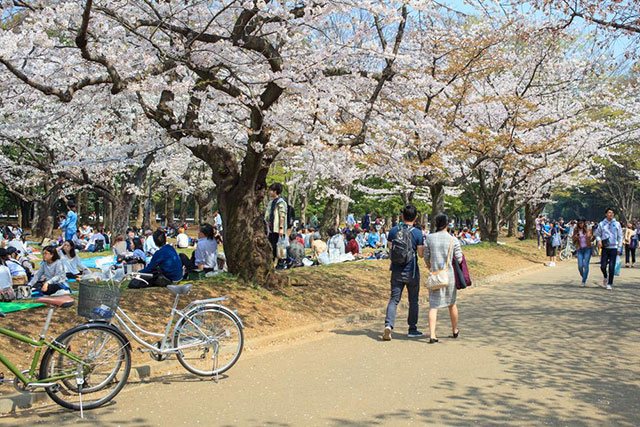
So you’ve booked the flights and accommodation, and the itinerary is all mapped out. Now all that’s left is to pack. On the one hand, you don’t want to overpack and be stuck lugging massive suitcases across the country, but on the other hand, you don’t want to be stuck high and dry because you overlooked the necessities. To avoid any last minute manic scrambles, here’s a seasonal rundown on what you can’t forget.
-
01
Spring and Autumn
![Spring and Autumn]()
Spring and Autumn
Pack light clothes, but enough to layer up a little. Depending on where you are the temperature can be surprisingly temperamental, going from warm sunny days to exceptionally cool evenings, especially the higher up you go.
Around April is prime season for cherry blossoms, but it’s also prime allergy season too, so if you are prone to hay fever, be sure to pack the necessary medication. Do be warned that Japan may have restrictions on bringing particular medicines into the country. Medicines that contain Pseudoephedrine or Codeine are prohibited depending on the quantity of stimulant raw materials. If you’re not too sure, check with the embassy first. If you don’t have medication, you can always consider picking up a facemask from a convenience or drug store.
Both spring and autumn are when the natural landscape is at its most beautiful, so chances are you’ll want to get out there and explore. There are countless scenic walking trails just a short trip from most of the major cities, like Mount Takao just outside Tokyo, so make sure to pack those walking shoes! -
02
Summer
![Summer]()
Summer
For so many of us, summer means long warm, dry, sunny days, but in Japan - especially during typhoon season - it can be a very different story. Summer is incredibly humid in Japan, so it’s worth packing clothes made from extra absorbent and breathable fabrics, cotton shirts are a good tip. Also, a light waterproof jacket won’t go astray if you get caught in a summer downpour.
Sweating a lot is a given too, so if you’re feeling self-conscious, it may be worth packing a small hand towel, carrying something like a tenugui -small cloth towel- is standard practice during the warmer months. Finally, don’t forget to pack your swimming gear as Japan has some incredible beaches! -
03
Winter
![Winter]()
Winter
Winter in Japan can get bitterly cold, especially if you’re planning a trip up north, but even Tokyo drops to sub-zero temperatures in the colder months.
Thermals are a given if you want to make the most of your time not cooped up indoors. Down jackets with extra padding are worth throwing in the suitcase too. If you do forget anything, you can find plenty of winter necessities at UNIQLO. The air during this time of year is particularly dry and can be harsh on sensitive skin, so to avoid the confusion of having to decipher creams and lotions at the drug store here, consider bringing your own. -
04
Miscellaneous
![Miscellaneous]()
Miscellaneous
Miscellaneous
Power adaptors: Generally Japanese sockets are compatible with those from the US, but the voltage is slightly lower. The voltage in Japan is 100V, while in North America it’s 110-120V, and in Central Europe it’s 230V.
Painkillers: Some visitors have complained in the past that compared to back home, Japan’s painkillers aren’t quite as strong, so if you’re prone to aches and pains, it’s worth packing some. Some items, like allergy pills, may be prohibited, so it’s best to do your homework ahead of time to avoid any trouble.
Shoes that slip on and off easily: In Japan, wearing shoes inside a house, and other particular locations (certain temples, some restaurants, places with tatami mat flooring) is considered a no-go, so to avoid headaches, pack shoes that can be slipped on and off easily.![Miscellaneous]()
Miscellaneous
Backpack: Tokyo is a large sprawling city, and if you want to make the most of your time there, or in any of Japan’s other major cities, you'll probably be out most of the day. A backpack is the easiest way to carry all your daily necessities and is an easy bag to manage when both battling early morning commuter trains and climbing the outer city hiking trails. You can also leave your luggage at Hands-Free Travel stations across the country to make getting around easier.
Tattoo coverings: Although the attitude is slowly changing, some places in Japan are still somewhat wary about tattoos. Traditionally tattoos in Japan were associated with mafia (yakuza) activity. Onsens, public pools, gyms, and even some nightclubs may turn you away if they see you brandishing any ink, so pack some plasters or bandages to keep the tattoos under wraps.Narita Airport - Karuizawa Bus by Goryo Bus
¥4,000
Update date:2024/04/25






 Go here
Go here





